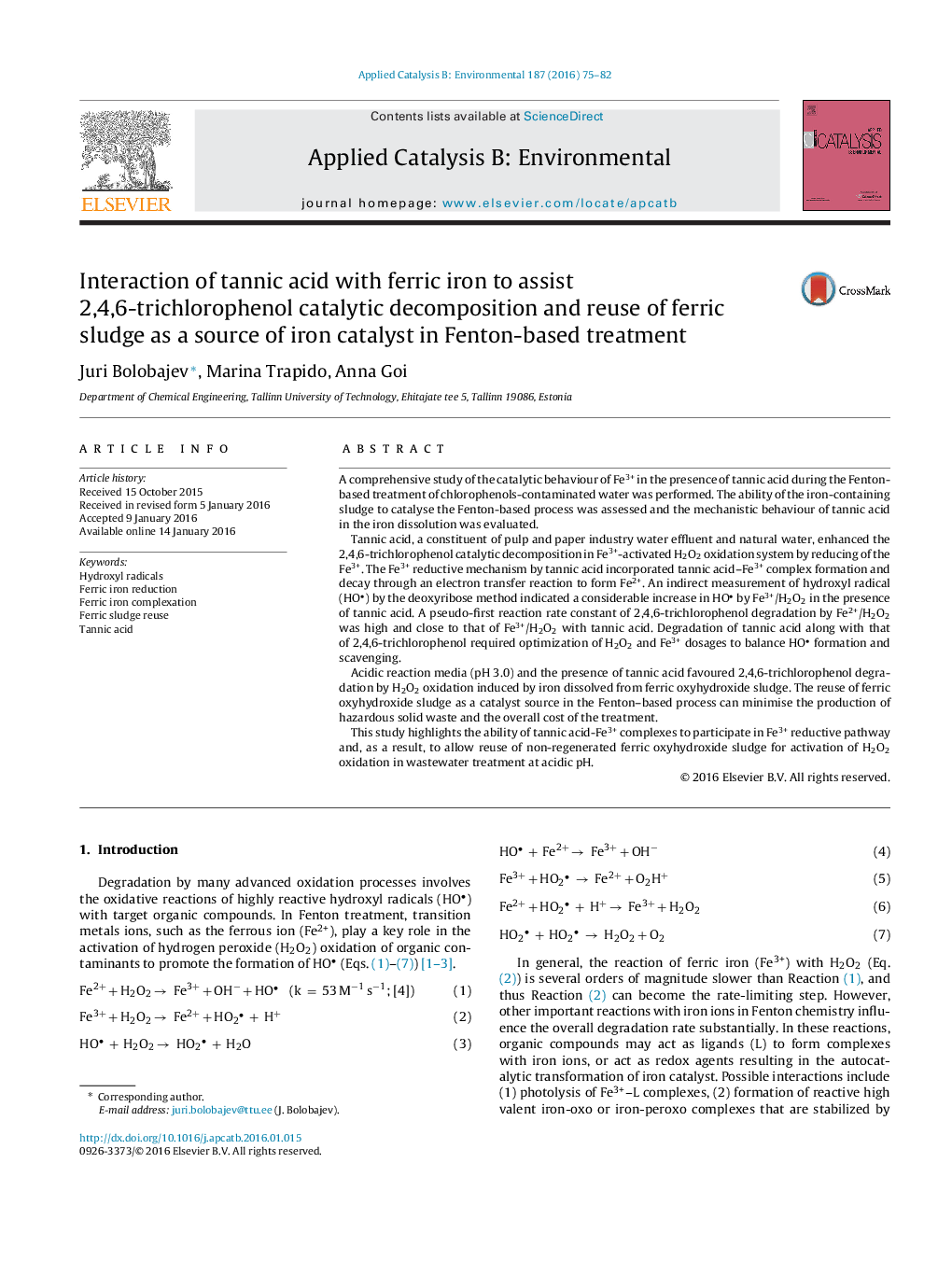| Article ID | Journal | Published Year | Pages | File Type |
|---|---|---|---|---|
| 45088 | Applied Catalysis B: Environmental | 2016 | 8 Pages |
•Tannic acid is involved in iron redox cycling of Fenton-based oxidation.•Tannic acid improved 2,4,6-trichlorophenol catalytic decomposition by Fe3+/H2O2.•Complexation by tannic acid occurs in the iron-reductive mechanism.•Sludge reuse is effective at acidic pH and in the presence of tannic acid.•Tannic acid, a constituent in water, scavenges hydroxyl radicals and is degraded.
A comprehensive study of the catalytic behaviour of Fe3+ in the presence of tannic acid during the Fenton-based treatment of chlorophenols-contaminated water was performed. The ability of the iron-containing sludge to catalyse the Fenton-based process was assessed and the mechanistic behaviour of tannic acid in the iron dissolution was evaluated.Tannic acid, a constituent of pulp and paper industry water effluent and natural water, enhanced the 2,4,6-trichlorophenol catalytic decomposition in Fe3+-activated H2O2 oxidation system by reducing of the Fe3+. The Fe3+ reductive mechanism by tannic acid incorporated tannic acid–Fe3+ complex formation and decay through an electron transfer reaction to form Fe2+. An indirect measurement of hydroxyl radical (HO) by the deoxyribose method indicated a considerable increase in HO by Fe3+/H2O2 in the presence of tannic acid. A pseudo-first reaction rate constant of 2,4,6-trichlorophenol degradation by Fe2+/H2O2 was high and close to that of Fe3+/H2O2 with tannic acid. Degradation of tannic acid along with that of 2,4,6-trichlorophenol required optimization of H2O2 and Fe3+ dosages to balance HO formation and scavenging.Acidic reaction media (pH 3.0) and the presence of tannic acid favoured 2,4,6-trichlorophenol degradation by H2O2 oxidation induced by iron dissolved from ferric oxyhydroxide sludge. The reuse of ferric oxyhydroxide sludge as a catalyst source in the Fenton–based process can minimise the production of hazardous solid waste and the overall cost of the treatment.This study highlights the ability of tannic acid-Fe3+ complexes to participate in Fe3+ reductive pathway and, as a result, to allow reuse of non-regenerated ferric oxyhydroxide sludge for activation of H2O2 oxidation in wastewater treatment at acidic pH.
Graphical abstractFigure optionsDownload full-size imageDownload as PowerPoint slide
